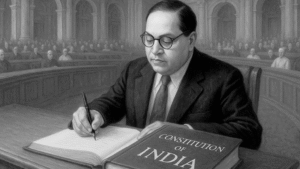What If NCR Merges with Delhi? Pros, Cons, and the Future of India’s Capital
Introduction
Delhi, the heart of India, faces immense challenges due to overpopulation, pollution, and congestion. The National Capital Region (NCR), comprising cities like Noida, Gurugram, Faridabad, and Ghaziabad, serves as an extension of Delhi. But what if NCR were permanently merged into Delhi?
Would this be a smart move toward decongesting the capital, or would it create new administrative and infrastructural challenges? Let’s analyze the pros and cons of this bold proposal and what it could mean for India’s governance, economy, and environment.
What is the National Capital Region (NCR)?
The National Capital Region (NCR) is a metropolitan area surrounding Delhi, covering parts of Haryana, Uttar Pradesh, and Rajasthan. Cities like Noida, Gurugram, Faridabad, and Ghaziabad play a crucial role in supporting Delhi’s economic and infrastructural needs.
The NCR Planning Board (NCRPB) was established to ensure balanced development across these regions. However, the administrative and governance structure remains fragmented, often leading to coordination issues between states and the central government.
Pros of Merging NCR with Delhi
1. Reduced Pollution & Better Air Quality
Delhi struggles with severe air pollution, especially during winter. A merger could lead to:
- Decentralization of offices and industries, reducing vehicular congestion.
- Better waste management policies, with a uniform approach across the region.
- Increased green cover, with parks and green belts spread across the expanded capital.
Related Read: How Delhi Can Overcome Its Pollution Crisis
2. Reduced Traffic Congestion & Better Transportation
A unified Delhi-NCR could introduce:
- Integrated public transport, reducing dependence on private vehicles.
- Helicopter services for VIPs and officials, can be started to easing road congestion and VIP traffic routes.
- Expansion of metro and high-speed rail networks, allowing faster commuting.
3. Administrative Efficiency
- Currently, different states manage NCR cities, leading to inconsistent policies.
- A merger could create a single governing body, ensuring better coordination in urban planning, infrastructure, and law enforcement.
4. Economic Growth & Real Estate Boom
- More investment opportunities as businesses operate under a single tax and regulatory framework.
- Infrastructure projects would get a boost, increasing property values across the region.
5. Decongesting Delhi’s Core Areas
- Important government institutions, including ministries and courts, could be shifted to satellite cities, reducing the burden on Central Delhi.
- This could also lead to better work-life balance for residents, as job hubs expand beyond Delhi’s central districts.
Cons of Merging NCR with Delhi
1. Administrative & Political Challenges
- Currently, NCR cities are under different state governments. Haryana, Uttar Pradesh, and Rajasthan might oppose losing control over these cities.
- Governance restructuring could lead to bureaucratic delays.
2. Real Estate Price Surge
- Merging NCR into Delhi could increase property prices, making housing unaffordable for middle-class families.
- More commercial projects could reduce green spaces and increase urban heat.
3. Increased Cost of Living
- A unified Delhi-NCR might adopt higher municipal taxes.
- Essential services like water and electricity might see higher tariffs.
4. Public Resistance & Social Issues
- Citizens of Noida, Gurugram, and Faridabad might resist losing their state identity.
- Shifting government offices could cause temporary job losses in some areas.
Potential Solutions for a Smooth Merger
1. Phased Integration Plan
Instead of an immediate merger, a phased approach could be implemented:
- Phase 1: Unify law enforcement and public transport.
- Phase 2: Standardize governance policies.
- Phase 3: Full administrative merger.
2. Decentralized Government Offices
- Important ministries and courts could be shifted to Noida, Gurugram, or Faridabad, reducing congestion in Delhi.
- This would boost economic development in these areas.
3. Smart Infrastructure & Green Initiatives
- Develop satellite townships with sustainable urban planning.
- Encourage electric public transport and bike-friendly roads.
Conclusion: Is Merging NCR with Delhi a Good Idea?
Merging NCR with Delhi could redefine urban governance in India, making the capital more sustainable, efficient, and livable. However, it requires careful planning to address political, economic, and social concerns.
With a phased approach, proper urban planning, and a focus on sustainability, this merger could be the key to transforming India’s capital into a world-class city.
Merging NCR with Delhi is a visionary concept that has the potential to transform India’s capital into a more efficient, sustainable, and well-planned metropolis. By decentralizing government offices, improving infrastructure, and integrating public transport, this move could significantly reduce pollution and congestion while boosting economic growth. However, the challenges—such as administrative restructuring, political opposition, and potential increases in the cost of living—must be carefully addressed. A phased and well-executed approach, prioritizing urban planning and environmental sustainability, could make this merger a groundbreaking step toward building a world-class capital region.
What do you think in this concept, please comment.
FAQs
1. Will merging NCR with Delhi reduce pollution?
Yes, decentralizing industries and offices, expanding green spaces, and integrating public transport can significantly reduce pollution levels.
2. How will it affect real estate prices?
Real estate prices may increase, but planned urban expansion can balance affordability.
3. What cities will be affected?
Noida, Gurugram, Faridabad, Ghaziabad, and parts of Rajasthan’s NCR region.
4. Will government offices shift outside Delhi?
Yes, ministerial offices and courts could be relocated to satellite cities, reducing congestion in Central Delhi.
Share this content:














Post Comment